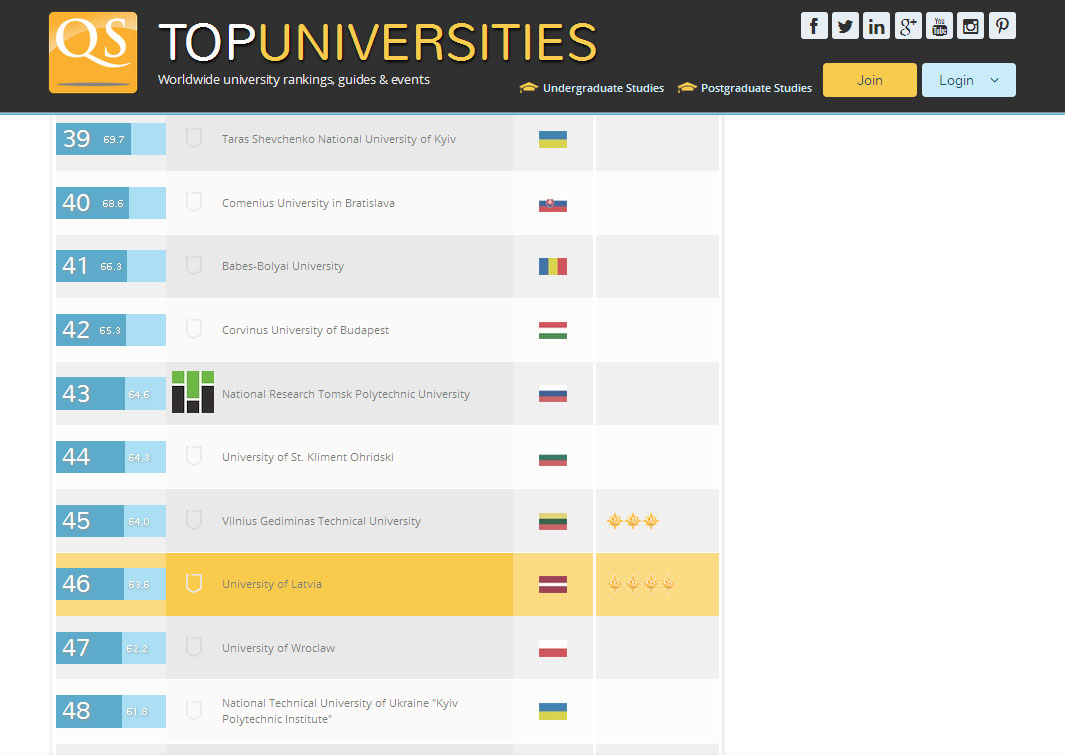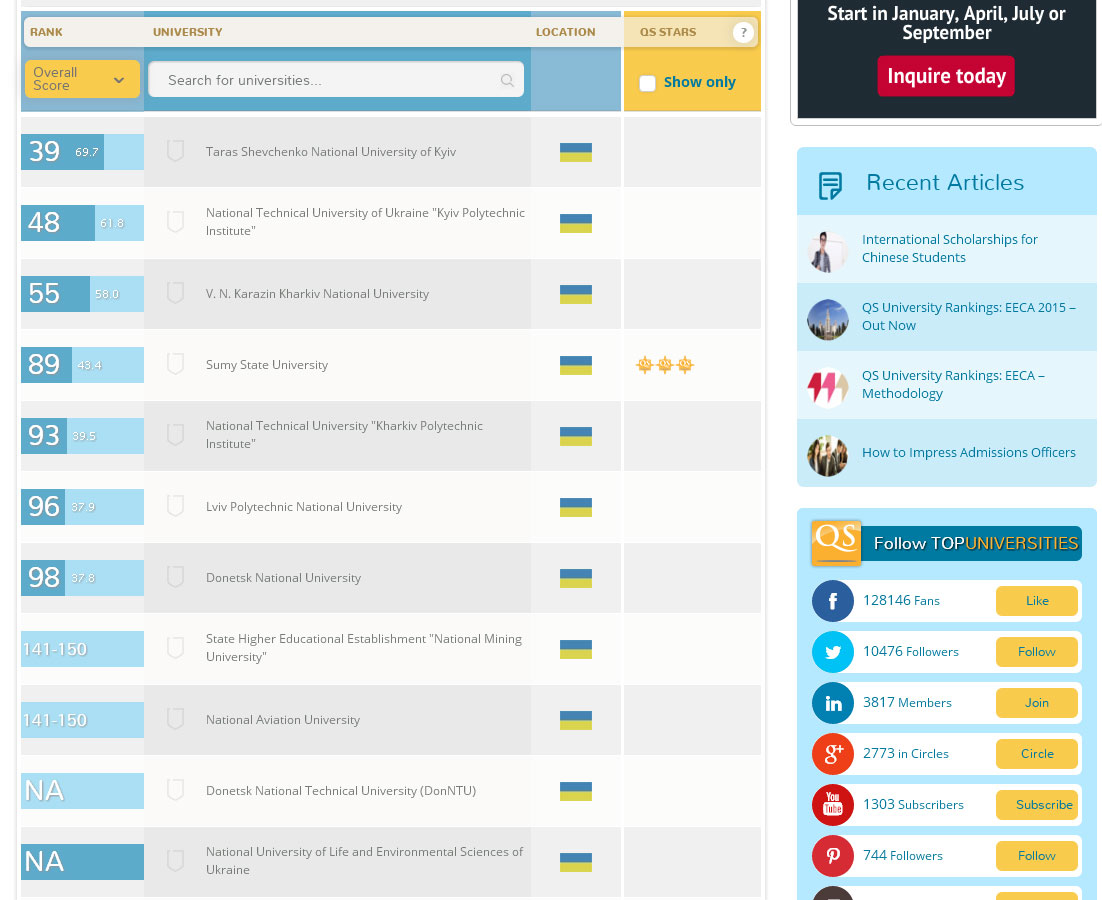

Усього оцінювалося 500 вишів регіону.
Інтегральний бал обчислювався на підставі низки даних, до якої входила інформація про академічну репутацію навчального закладу (30%), його репутацію серед роботодавців (20%), співвідношення кількості студентів та факультетів (15%), кількість публікацій на факультетах (10%), Веб-імпакт (10%), кількість викладачів і співробітників зі ступенем PhD (5%), індекси цитування (5%) та кількість міжнародних факультетів (2,5%) та іноземних студентів (2,5%).
http://www.topuniversities.com/university-rankings-articles/eeca-univers...
A total of nine factors are assessed, each of which contributes a certain proportion towards institutions’ overall scores. The results table can be sorted to compare universities on each of these nine indicators.
Academic reputation (30%)
As is the case for all of QS’s university rankings, global reputation is assessed through two major international surveys. The first of these is the annual QS Global Academic Survey, which asks academics worldwide to identify the institutions they perceive to be conducting the best work in the own field. In 2015, more than 72,000 responses were considered.
Employer reputation (20%)
Alongside the academic survey, the QS Global Employer Survey asks graduate employers across the planet to name the institutions they believe to be producing the best graduates in their sector. For the 2015 rankings, more than 44,000 employer responses fed into the results.
Faculty/student ratio (15%)
In lieu of a reliable or practical method by which to assess and compare teaching quality internationally, faculty/student ratio is considered. This is based on the number of students enrolled per full-time academic staff member, aiming to give an indication of each institution’s commitment to providing high standards of academic support.
Papers per faculty (10%)
Calculated using data from Elsevier’s Scopus – the world’s largest abstract and citation database of peer-reviewed academic literature – this indicator reflects research productivity, based on papers published per academic faculty member.
Web impact (10%)
Based on the Webometrics ranking, this indicator reflects the extent of each institution’s online presence, one aspect of their commitment to international engagement and communication.
Staff with a PhD (5%)
A priority and growing strength for many leading universities in the EECA region is the recruitment of academic staff members qualified to PhD level or the equivalent. Progress in this area is assessed by calculating the proportion of faculty members at this level.
Citations per paper (5%)
Again based on data from the Scopus database, this indicator aims to assess research impact, based on the frequency with which an institution’s published papers are cited by other researchers around the world.
International faculty (2.5%) and international students (2.5%)
Finally, the last two indicators are based on the proportion of faculty members and students who are international. This provides an indication of the diversity of the institution’s community and learning environment, as well as reflecting success in attracting academics and students across national borders.